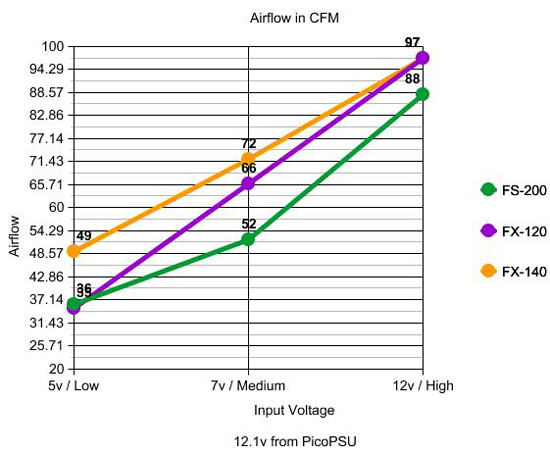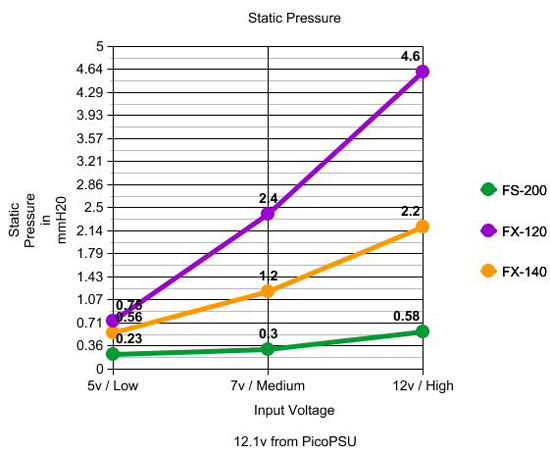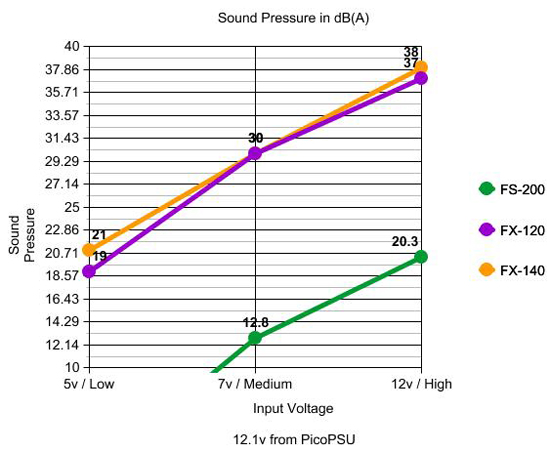NZXT FX120, FX140, & FS200-R Case Fan Reviews
NZXT Fan Testing
Testing Methodology & Results

Today we’ll be testing 4 Aspects of these fans:
- Sound Pressure Level (recorded in dBA)
- Airflow (recorded in CFM)
- Static Pressure (recorded in mmH20)
- Heat Tolerance (testing done at 30*C)
The Testing Equipment that I will be using was purchased by me and it includes:
- Dwyer Differential Pressure Gauge Model 2000-00 AV
- General Tools DCFM8906 Digital Air Flow Meter
- Tenma Digital Sound Level Meter
- Kintrex IRT0421 Non-Contact Infrared Thermometer
- Universal Enterprises DM383B Digital Multimeter

Starting off the bat, we see everything pretty much standard for fans of this caliber. The FS-200 had a bit of an odd curve with a dip at the 7v setting; but it’s nothing to worry about.

For the blade types of the fans, as well as the fan sizes, static pressure is mostly as expected. The FS-200 again, is a bit odd, as its 5v mode was a bit higher than expected.

Unfortunately, as you may notice on the FS-200 results; our sound meter is limited to only going as low as 10dB(A) when calibrated. Below that, the results can be off as much as 30%.
Here’s a bit of an odd category: the FX-140 was louder than the FX-120, almost every time. With that said, the FX-120 & FX-140 models are definitely being run to their impeller’s maximum limit. The FX-140 and FX-120 both had bearing noise present while running at full speed. There was a slight tic noise about every 2 seconds. The FX-140 & FX-120 both did not like using 5v or 7v resistors, but PWM control allowed these fans to smooth out in their noise profile by eliminating some of the intensity of the tics.

Comments are closed.